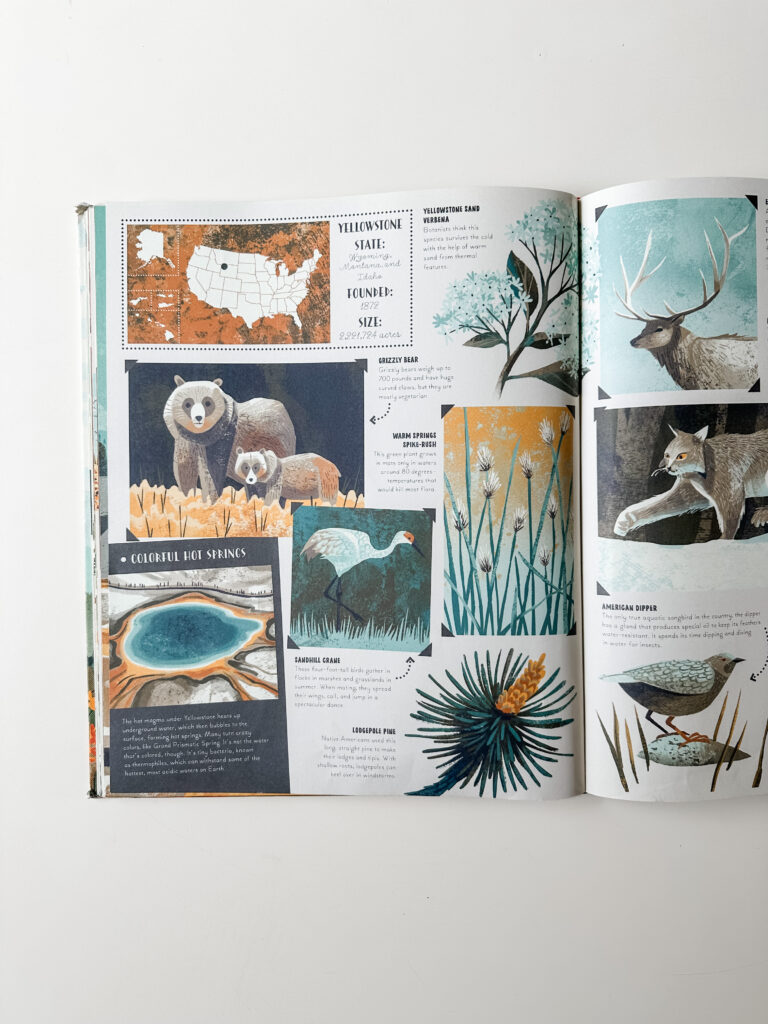You have no items in your cart. Want to get some nice things?
Go shopping
Early on in our marriage my husband and I decided that we wanted to prioritize traveling our own country before traveling internationally. We want our children to develop an intimate relationship with their country’s geography, and that can only happen when we spend a lot of time traveling and exploring the wonders in our own land. Of course we want to travel internationally, eventually, but only after we’ve become familiar with our own country’s geography and natural wonders, And we feel the best way to do this is by visiting our National Parks.
The United States is an amazingly diverse land; with deserts, forests, grasslands, and coasts. There is so much to explore! Since we homeschool we have the freedom to incorporate our travel into our school lessons, particularly geography. The National Park Service offers a Junior Ranger Program for kids, but I found it lacking substance. It was mostly busywork that kept children distracted staring at a booklet rather than enjoying the wonders around them. So I decided to put together my own simple learning experience and activities. Ones that introduced my family to the unique geography, history, nature, and culture of that area; ones that created a curiosity and enthusiasm to look around them and learn from the real environment.
Before We Visit
Before we visit the park my goal is to ignite curiosity and instill some basic knowledge of the park we’ll visit. I like to read books about the history and culture of that area. I prioritize reading about Native American tribes and how they adapted to that specific landscape. I include interesting historical stories, but not too many. I don’t want to overload my kids; I just want to give them a taste so they’ll crave more. In addition to history, we read books about the biome and flora and fauna of the area. This just gives them some idea of what to look for as we hike in the park. Finally, we study some geography. I like to incorporate some map questions of the area — bodies of water, elevation, mountain ranges, major cities– and afterwards ask them to draw a map of the area and include the things we studied (bodies of water, mountain ranges, etc). Before leaving I sometimes bring questions for an nature object lesson while we hike. I find the ideas and questions in The Handbook of Nature Study by Anna Comstock.
During Our Visit
The main goal during our visit to the park is to use our five senses to get a lay of the land and form relationships with the flora and fauna of that region. I avoid reading books and recording in our nature journals during this time. Instead, we have travel notebooks that we record questions and notes for later study. I bring my old DSLR camera for them to take pictures of specimens; they’ll record these in their nature journal later.
If I brought questions for an object lesson I’ll look for the specimen (say, a certain wildflower) and ask the questions while the children look at it and answer. It’s not meant to be a test or assignment; the purpose is to direct their attention to things they may not have noticed and develop observation and thinking skills.
After Our Visit
Once we’re home (or at the hotel in the evening), we record what we learned in our travel journal. If your child recorded questions during your visit, this is the time for them to research answers and record what they learn. I upload the photos we took onto my computer, delete the ones we don’t want :), and the kids draw or paint what they found in their nature journals.
Depending on the age, you can require them to write an essay or create a presentation on what they learned.
After visiting the area you may discover new topics you want to study further. For example, after visiting the Everglades my boys collected and brought home a lot of seashells, which prompted further nature study lessons at home.
Resources
My hope is that by sharing these resources and experiences with you it will instill a love of our country and its magnificent wonders with your family.

Two books that I use for all our travels are National Parks of the U.S.A by Kate Siber and Little Stories of a Big Country by Laura A. Large. These are our “spines” (the backbone of our studies) that we supplement with other living books and documentaries.

National Parks of the U.S.A
This book is a feast for the eyes, and a great introduction to the animals you’ll see at the major National Parks. I love that it divides the country into regions and visually shows you the national parks in that area.

Little Stories of a Big Country
This book is older and out of print, but you can find used copies as well as a digital one on archive.org. My boys love the stories from this old book and have asked to read it multiple times. It really engages their curiosity and excitement; I consider it a must-have when studying U.S. geography and the National Parks. Another option for older children is America: Land of Wonders by Frances Wood.
I’m writing guides for each National Park we visit, complete with booklists and travel suggestions. You can find them below:
